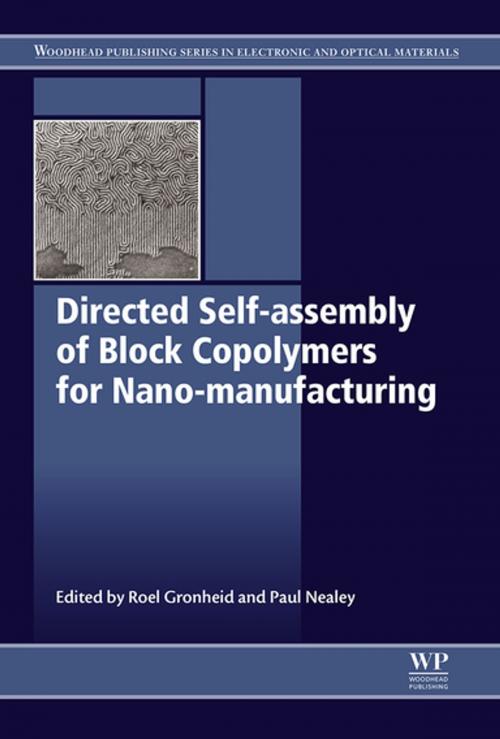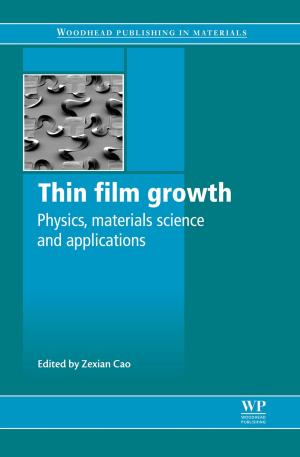Directed Self-assembly of Block Co-polymers for Nano-manufacturing
Nonfiction, Science & Nature, Technology, Textiles & Polymers, Material Science| Author: | ISBN: | 9780081002612 | |
| Publisher: | Elsevier Science | Publication: | July 17, 2015 |
| Imprint: | Woodhead Publishing | Language: | English |
| Author: | |
| ISBN: | 9780081002612 |
| Publisher: | Elsevier Science |
| Publication: | July 17, 2015 |
| Imprint: | Woodhead Publishing |
| Language: | English |
The directedself-assembly (DSA) method of patterning for microelectronics uses polymer phase-separation to generate features of less than 20nm, with the positions of self-assembling materials externally guided into the desired pattern. Directed self-assembly of Block Co-polymers for Nano-manufacturing reviews the design, production, applications and future developments needed to facilitate the widescale adoption of this promising technology.
Beginning with a solid overview of the physics and chemistry of block copolymer (BCP) materials, Part 1 covers the synthesis of new materials and new processing methods for DSA.Part 2 then goes on to outline the key modelling and characterization principles of DSA, reviewing templates and patterning using topographical and chemically modified surfaces, line edge roughness and dimensional control, x-ray scattering for characterization, and nanoscale driven assembly. Finally, Part 3 discusses application areas and related issues for DSA in nano-manufacturing, including for basic logic circuit design, the inverse DSA problem, design decomposition and the modelling and analysis of large scale, template self-assembly manufacturing techniques.
- Authoritative outlining of theoretical principles and modeling techniques to give a thorough introdution to the topic
- Discusses a broad range of practical applications for directed self-assembly in nano-manufacturing
- Highlights the importance of this technology to both the present and future of nano-manufacturing by exploring its potential use in a range of fields
The directedself-assembly (DSA) method of patterning for microelectronics uses polymer phase-separation to generate features of less than 20nm, with the positions of self-assembling materials externally guided into the desired pattern. Directed self-assembly of Block Co-polymers for Nano-manufacturing reviews the design, production, applications and future developments needed to facilitate the widescale adoption of this promising technology.
Beginning with a solid overview of the physics and chemistry of block copolymer (BCP) materials, Part 1 covers the synthesis of new materials and new processing methods for DSA.Part 2 then goes on to outline the key modelling and characterization principles of DSA, reviewing templates and patterning using topographical and chemically modified surfaces, line edge roughness and dimensional control, x-ray scattering for characterization, and nanoscale driven assembly. Finally, Part 3 discusses application areas and related issues for DSA in nano-manufacturing, including for basic logic circuit design, the inverse DSA problem, design decomposition and the modelling and analysis of large scale, template self-assembly manufacturing techniques.
- Authoritative outlining of theoretical principles and modeling techniques to give a thorough introdution to the topic
- Discusses a broad range of practical applications for directed self-assembly in nano-manufacturing
- Highlights the importance of this technology to both the present and future of nano-manufacturing by exploring its potential use in a range of fields















